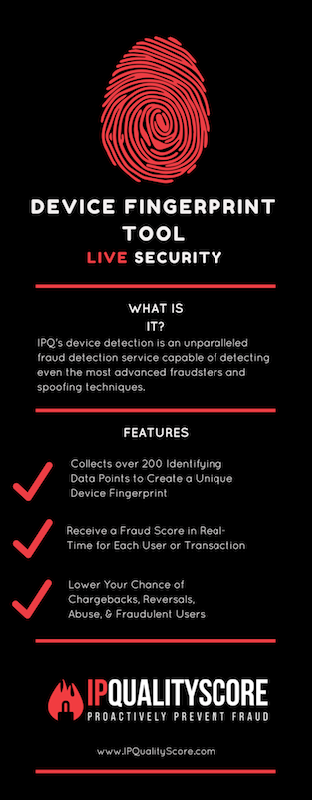Mobile eCommerce and click fraud is everywhere! Here are a few ways to prevent mobile fraud before it becomes an issue for your company.

It's 2021, we bring and use our mobile phones everywhere! Not only are mobiles extremely convenient, and addictive, but recent research has shown that mobile advertising is ranked in the top 3 ways to reach your customers in 2021.
According to research by Statista, nearly 4.9 billion people have access to mobile phones in 2021. With Smartphones continuing to get more advanced and more importantly, cheaper, Smartphone usage is expected to break 5.10 billion users in 2021.
Thousands of brands and companies world-wide rely on mobile advertising campaigns to generate traffic for websites, app installations, and ad clicks. With a huge boost in mobile traffic and ad campaigns trending upwards over the past few years, it is not surprising that mobile fraud has also become such a significant problem in the industry.
It's estimated that mobile ad fraud cost advertisers over $9 Billion in 2017 alone. So clearly ... it's a huge problem. In this article, we'll be explaining the most common types of mobile fraud and how the industry's most accurate fraud detection and prevention technologies that can stop them.
Click Fraud
When promoting advertising campaigns, companies want to see the real, raw results, not what fraudsters want them to see. This can be a challenging task as fraudsters continue to explore new tricks that bypass existing fraud filters and spoof common data points. Click fraud operates on the general basis that fraudsters keep their identity hidden, which allows for duplicate accounts, frequent switching of devices and IP addresses, and spoofing of one's true geo-location, among other harmful behaviors. Click fraud can be performed by automated scripts and bots, which can send thousands or even millions of fraudulent and invalid clicks.
So what damage can click fraud cause? Invalid clicks can quickly consume budgets for ad campaigns and prevent real customers from being targeted. Even business competitors have been accused of sending click fraud to their rival's campaigns. Some researchers estimate that as much as 40% of all ad traffic is currently fraudulent.
Install Fraud
Currently, advertising mobile applications to reach the ideal clients can be a tricky task, especially when trying to figure out where app installs are actually coming from. The current eco-system allows for little transparency in the overall data, which gives fraudsters an upper-hand for manipulating your data and causing harm to your business and websites.
It doesn't help that there are also "install farms" where hundreds of unique, real mobile devices rotate proxies to fraudulently install apps and consume marketing budgets. For example, an install farm in Indonesia could be operating hundreds or even thousands of mobiles through an automated program, which could rotate US IP addresses to appear as legitimate US traffic. As you can imagine, this would quickly consume marketing budgets and be very difficult to detect. There are truly no limits to how far fraudsters will go!
Impression Fraud
In a ecosystem where many advertisers receive profit based on impressions, there are dozens of ways fraudsters are taking advantage of this to wrongly game the system.
For instance, when viewing a simple banner ad that supposedly links to a single website, fraudsters can layer several ads on top of each other, distributing and charging for all of them, while only the ad on the surface can be seen.
Mobile ad fraud is not only ethically and morally wrong, but it's also severely damaging to company's overall revenue stream, and potentially data extraction, and customer security.
Fortunately, you don't have to feel helpless against this new rampaging wave of fraud. Along with general security strategies, IPQualityScore provides businesses and advertising companies the latest in fraud detection and prevention technologies, which are easily integrated across all platforms and devices.
Real Time Fraud Analysis

IPQS's Device Fingerprinting tool is the most accurate and advanced technology of its kind on the market. Providing to-the-minute analysis of who's viewing your ad campaigns and websites, and automatically assigning a real-time risk score.
Users will be tracked any time they switch devices, create duplicate accounts, spoof their signature, or have potential to engage in malicious behaviors. It's also possible to proactively redirect or block fraudsters before they can engage in harmful behavior.
In addition, this tool is capable of detecting users attempting to spoof and hide their identity with the help of VPN's, TOR, and proxies. This advanced level of analytics and real time evaluation will give you peace of mind while launching any mobile related project.
Automatically Maintained Blacklists
One of the most effective ways in preventing any type of fraud, is to use a blacklist to block fraudulent users from interacting with your ads or websites.
This is done by detecting users and their IP addresses who are either a recognized threat, or have potential to cause damage, and then automatically block them.
IPQS's blacklists are actively maintained and updated hourly to include the latest emerging threats from hijacked computers, open proxies, and other sources of malicious connections that could harm you or your company.
Simple API Integration
IPQS makes integrating our services and tools across all platforms and devices extremely easy. Using machine learning models that adapt to your audience, our APIs and tools will automatically adapt to your users and traffic to provide the most accurate fraud prevention for mobile and desktop devices alike.
In addition, our full suite of tools can be installed anywhere you have fraud or abuse, whether it be within applications, websites, or mobile apps.